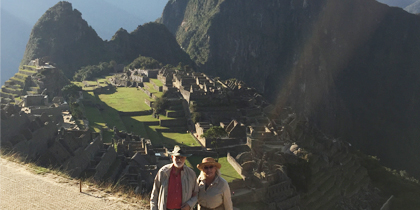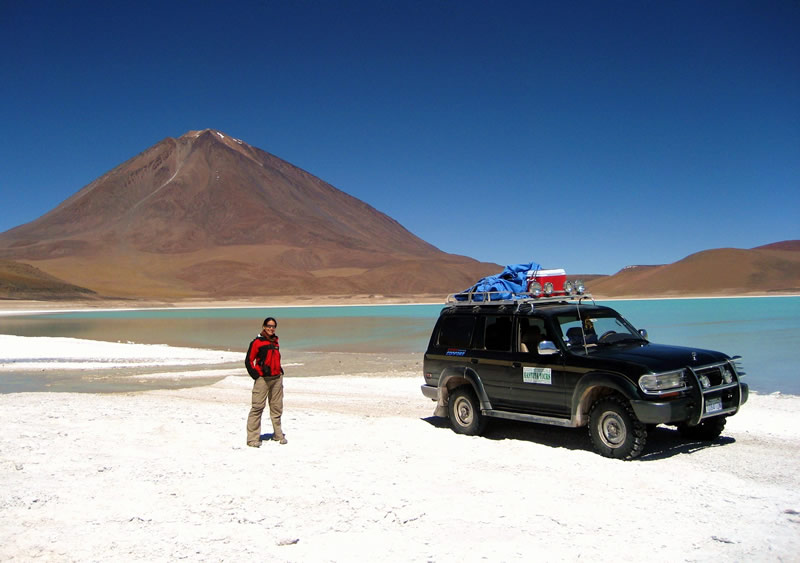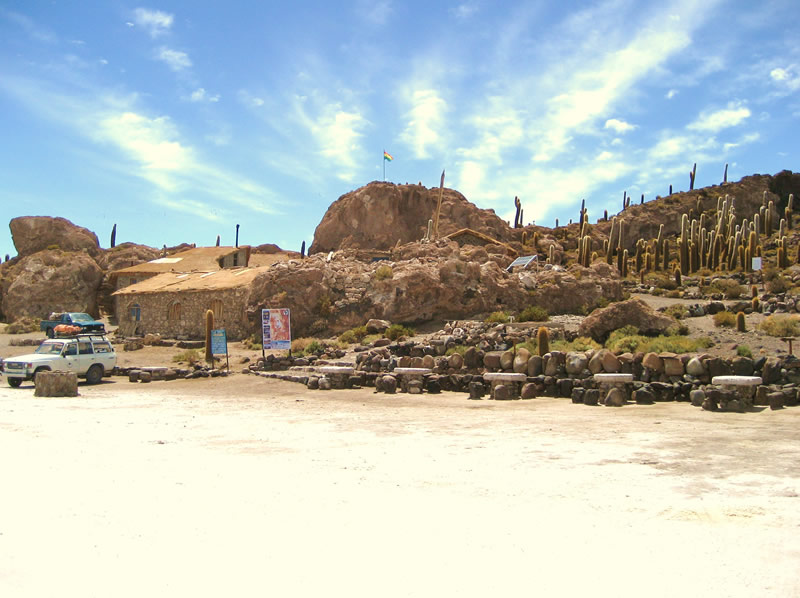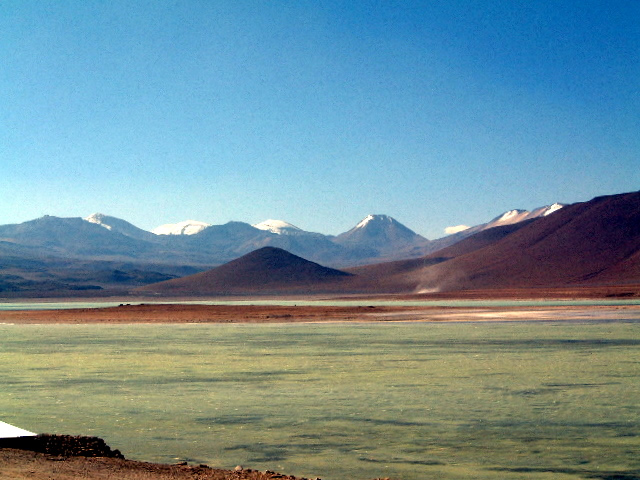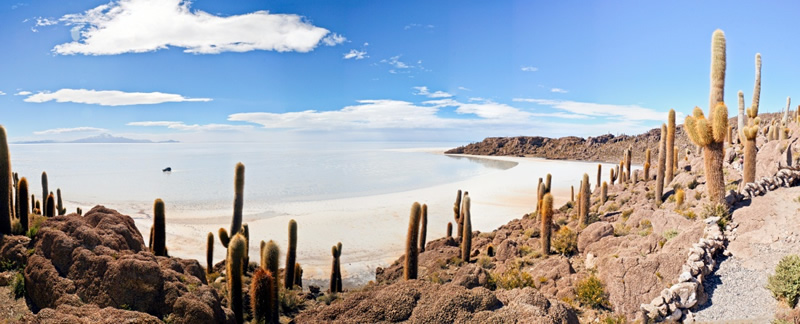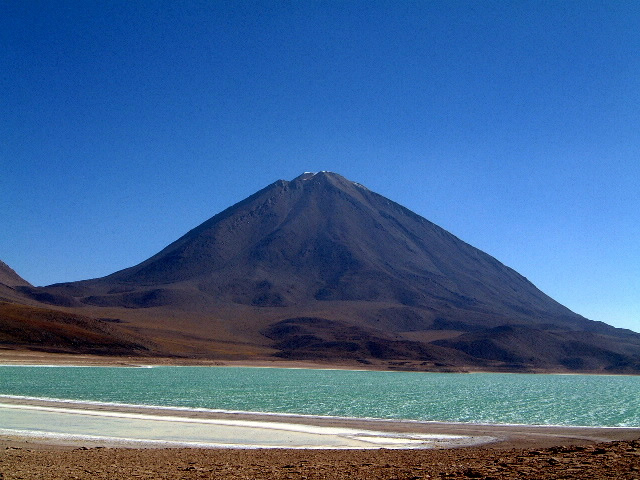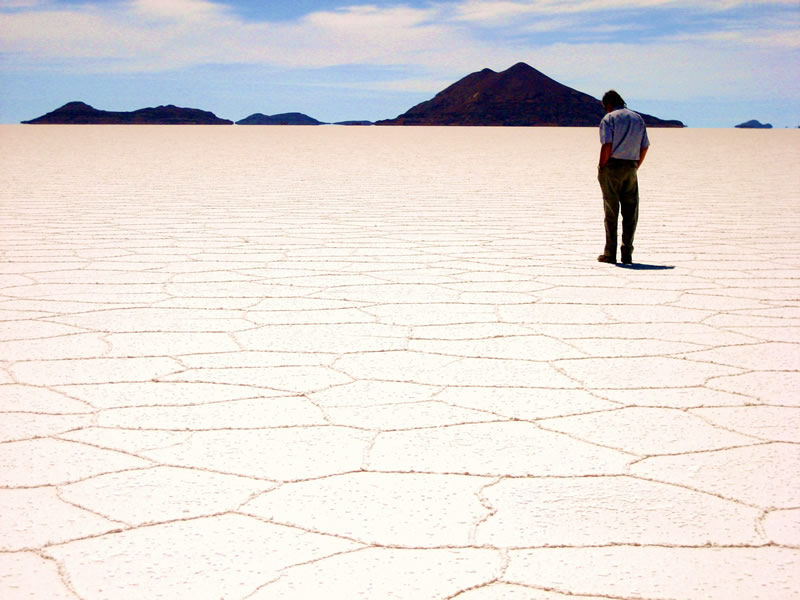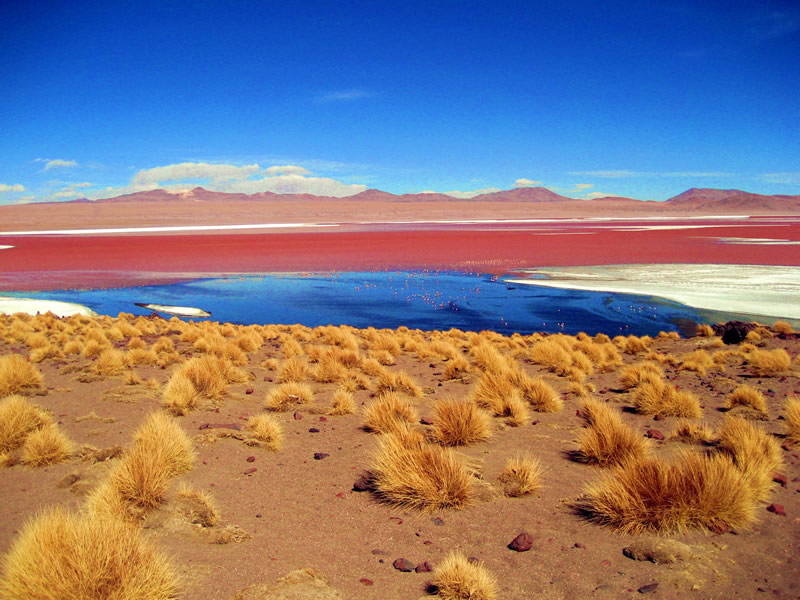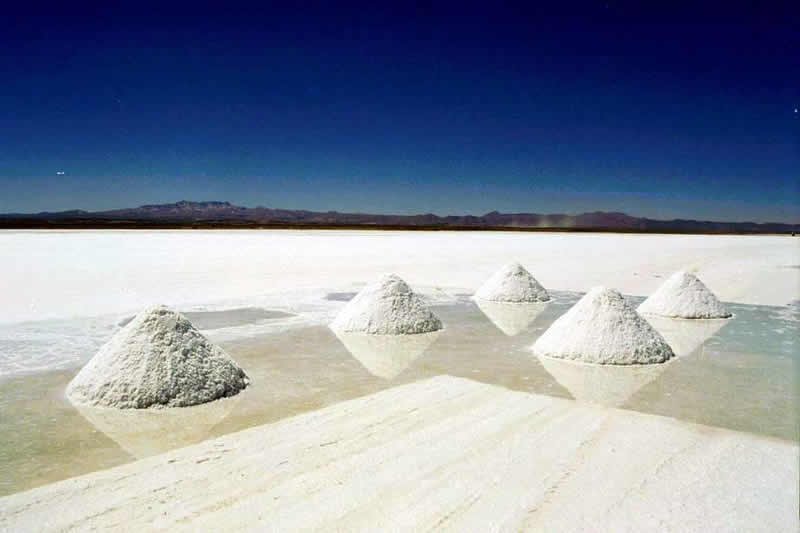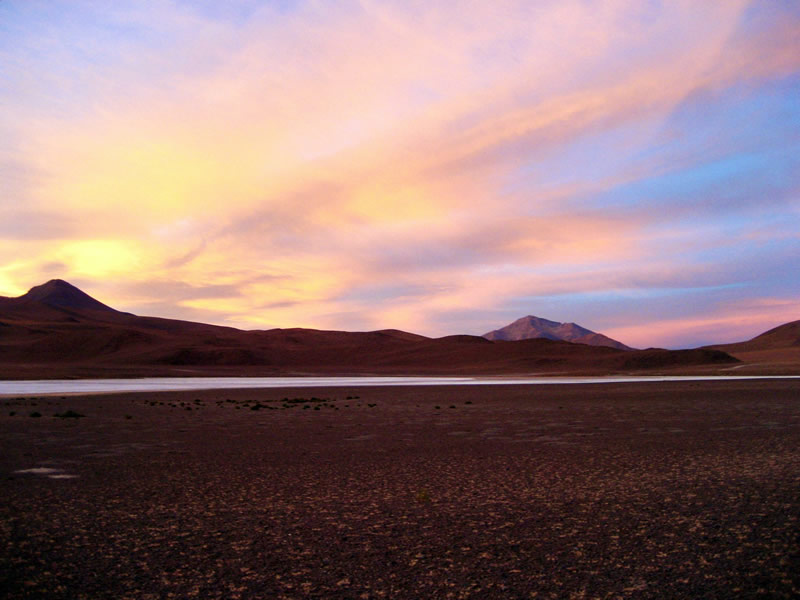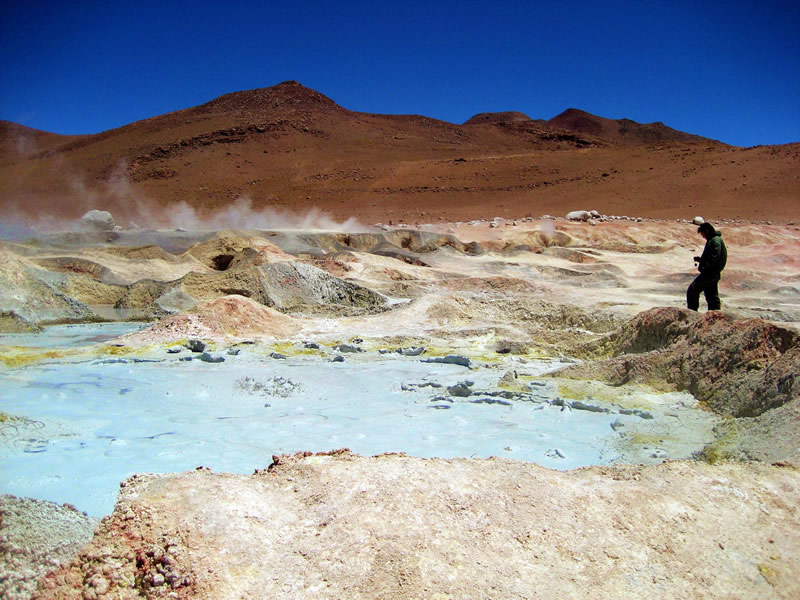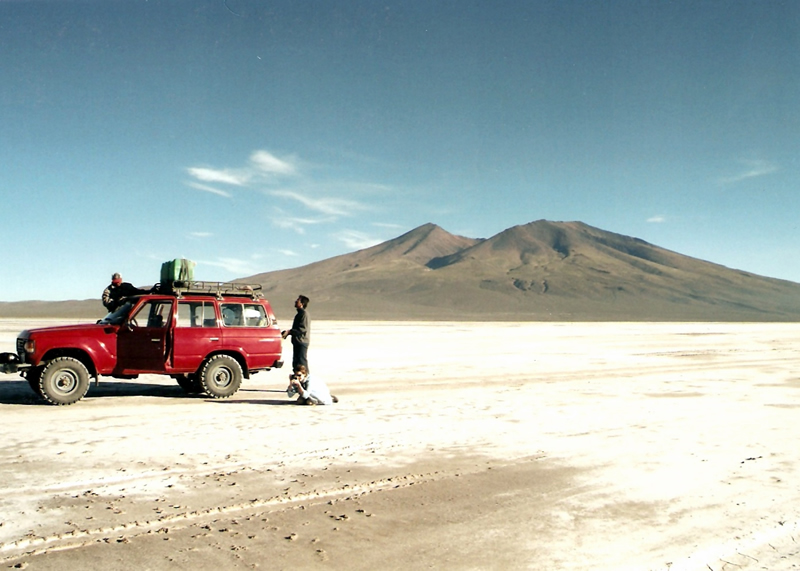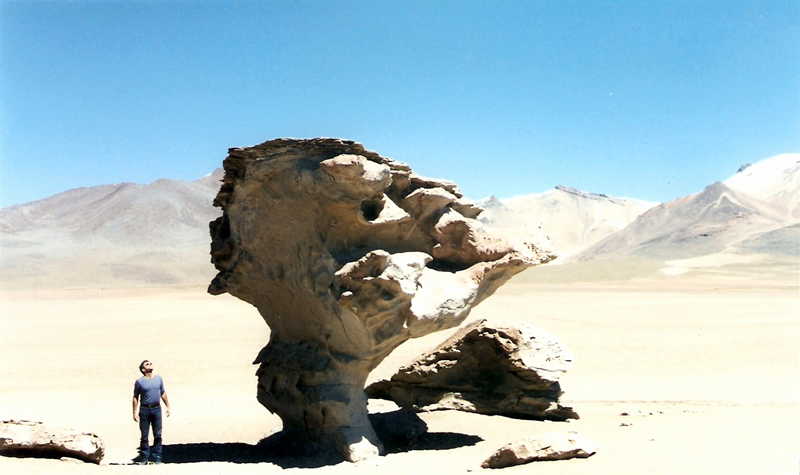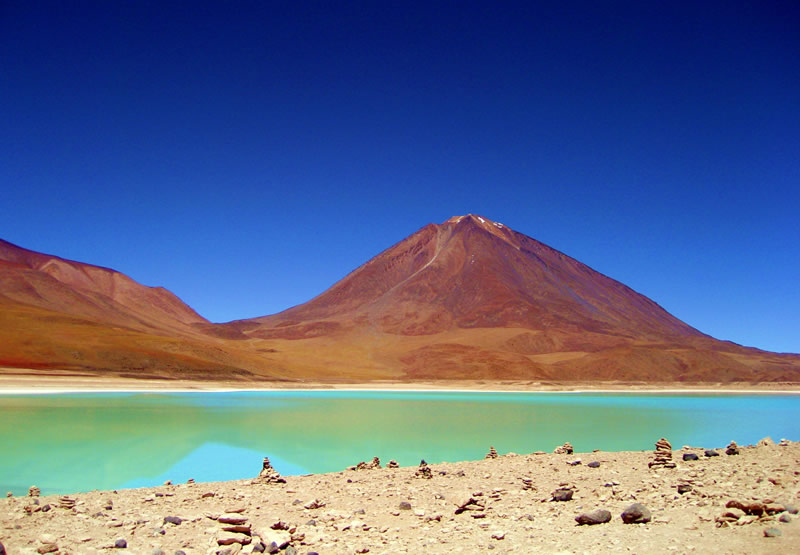By Lauren | Six AM is quite a time to start a long journey of any sort, but my colleagues, Simon and Yasmin, and I knew that a wonderful day was ahead of us, a day filled with sunshine, gentle lapping waves, and the survey of a solar observatory dating back to the 4th Century BC.
Las Aldas in Peru
Our first destination was the seaside retreat of Las Aldas. Situated a mile off the Pan-American highway, some 350km north of Lima, and down a winding, sandy road, this little bungalow-style lodging is a hidden retreat amongst the amazing mountains of sand that comprise the coastal landscape in and around Casma located in the north of Peru. Upon our arrival, host Mr. Dante Scarpati and our associate Wilson Diaz, our local operator and expert, graciously welcomed us. The sun was radiant and the ocean breeze was calming to the senses, as we stretched our legs and began our tour of the premises.
Each of the 18 minimally outfitted cabins is equipped with its own bathroom, 24-hour hot water, and electricity. Rustic in style, each cabin has its own unique decorations and features. Some have beautiful woven thatch ceilings, others with additional bedrooms or dining areas. As a pre-caution, all beds are equipped with mosquito netting, although the presence of these pests is seldom seen, Mr. Scarpati informed us. Where the cabins lack in luxury, they compensate with glorious views of the ocean, and you can take in the relaxing sights, smells, and sounds from the comfort and privacy of your very own porch and lounge chairs.
The most beautiful accommodation, however, was the cabin directly attached to the main dining room and communal porch. Immediately upon entering, I couldn’t help but notice the headboard and bedposts, beautifully hand-carved and stained with a rich lacquer that highlighted the intricacies of the handiwork. The room also boasted an antique armoire in excellent condition and complemented the beauty of the bed. Also unique to this cabin was the sitting area, with wrought-iron candle stands that paid homage to the wonders of the skies and wrap-around windows that connected you with the peaceful shoreline.
Snapping back to reality, we continued our tour to the common areas, some of which included a small chapel with colorful stained-glass windows, and a restaurant that also featured a really neat, antique foosball table. There was also a long porch that ran perpendicular to the water equipped with large communal tables and a carved, nautical-themed bar.
After our tour, we took some time to indulge in the local cuisine: fresh-caught pulpo, or octopus, amongst other varieties of fish and seafood. Located right off the highway, the unassuming restaurant that Mr. Scarpati highly recommended was a delicious way to refuel us before our trip to the ruins. The owner even boasted photos of the infamous Gaston Acurio, who had taken time on his own adventures to stop in for a bite to eat!
Chankillo, Peru
Heading about 15 minutes up the road, we arrived at the sign marker of Chankillo, and an additional 30-minute walk through the sandy hills (speckled with white and rose-colored quartz crystals), we arrived at the stone walls of the fortified temple of Chankillo. Wrapping in concentric circles around the peak of one of the hills, the walls had clearly been damaged by earthquakes and the elements. In 2010, the World Monuments Funds, partnered with the Instituto de Investigaciones Arqueológicas IDARQ, in collaboration with the Ministry of Culture in Peru, and with financial support from the ANTAMINA mining company and the British Peruvian Cultural Institute, began the Chankillo Revalorization and Sustainable Development Project for the site. (Read more about the WMF’s efforts on their website)
As we traversed the walls of the temple, Mr. Scarpati explained the astronomical significance of the site, and as we descended between the outer walls, the real highlight of the site was revealed. Thirteen towers perched along a ridgeline farther down the mountain marked the oldest known solar observatory in the Americas. These towers were located in a position to measure the rising and setting of the sun and thus served as a calendar system for the civilization that constructed it. In 2012, the BBC featured Chankillo in the series Wonders of the Universe, providing excellent insight into the significance of such a simple yet effective set of structures.
The sun began to set, the winds picked up, and the cold air of the desert began to chill us, and we started our walk back to the car. Turning around a few times to take in the ruins now heightened by the angled rays, I appreciated the opportunity to see such a magnificent and historical landmark as Chankillo, a site that is so often overlooked yet is not very distant from other significant archaeological sites in nothern Peru along what is known as the Moche Route, or from the stunning Cordillera Blanca mountain range, both of which have been mentioned on a previous blog article, “The Northern Circuit: Tying together destinations in northern Peru.”
Our goal for this trip was to expand our knowledge of archeological sites in what is an area of fabulously rich heritage, and to make these available to our guests. As we departed, we knew we had just added something mysterious and fantastic to our repertoire.
We parted ways with Wilson and headed back to Las Aldas to deliver Mr. Scarpati to his hideaway, where we were treated with soft drinks and a gorgeous view of the descending sun. Not ironically, we were all thinking the same thought: “Can we please stay the rest of the weekend?”

